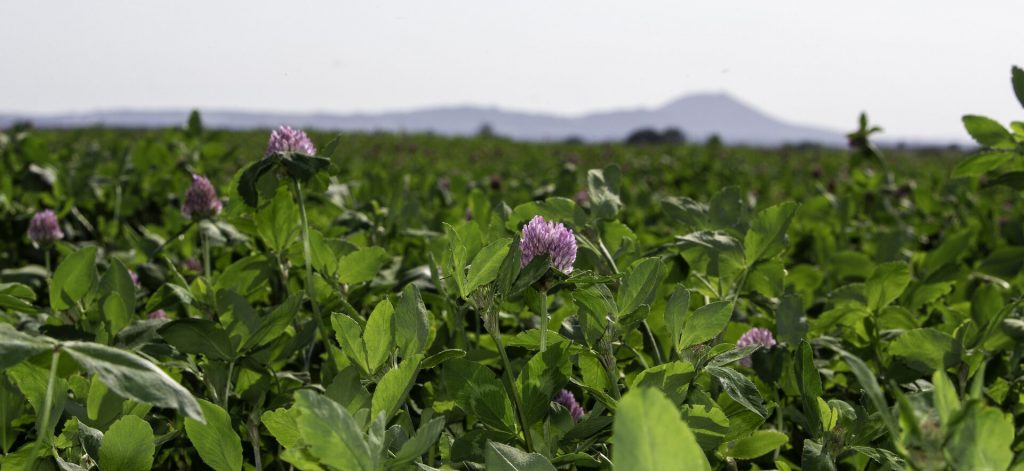Red clover seed
Red clover seed can produce a high-quality, cost-effective source of homegrown protein able to be grazed or cut and with the ability to fix nitrogen reducing the need for both bought-in feed and N fertiliser.
When cut, it typically has a dry matter (DM) percentage, metabolisable energy (ME) content and crude protein level above that of grass silage. With a protein content of 16-20% and containing an enzyme-reducing protein breakdown in the clamp, it is an attractive option for feeding high-performing livestock.

Red clover also performs well in severe weather, its long taproot increases its resilience to cold and drought. In the dry summer of 2022, red clover was still producing 15 tonnes DM/ha in many areas. The long taproot also benefits soil structure and fertility.
One of its shortcomings has been its relatively short persistence in the sward but the new generation Germinal red clovers, including AberClaret, have overcome this problem. Bred at Germinal Horizon in Aberystwyth, AberClaret lasts at least four years in a cutting sward and is significantly more tolerant of grazing. This longer productive life makes it more compatible with medium to long-term swards.
Environmental benefits of red clover
Red clover has good environmental credentials, too. After sowing red clover seed successfully, plants can fix nitrogen at a rate of 150 kg N/ha, releasing it to other plants, reducing the need for nitrogen fertiliser.
Bred at Germinal Horizon in Aberystwyth, AberClaret lasts at least four years in a cutting sward and is significantly more tolerant of grazing. This longer productive life makes it more compatible with medium to long-term leys.
Red clover: ACRES cover crop
Red clover is primarily used in grass and forage mixtures but can also be sown as a cover crop. This winter hardy crop offers several benefits, including fixing nitrogen to meet the needs of the following crop, protecting soil from erosion over winter, improving water infiltration and alleviating compaction as red clover produces a deep taproot.
When destroyed, it’s an excellent green manure. Red clover also attracts beneficial insects while growing.
For advice on how to sow red clover, feel free to speak with one of our forage experts.
Sowing rate: 16 kg/acre (4 kg red clover and 12 kg tetraploid perennial ryegrass) (40 kg/ha); ACRES: 8-10 kg/ha
Sowing time: April-late July
Sowing depth: 10-15 mm
Sowing instructions: Cultivate to achieve a fine, firm seedbed. Ploughing will help level rough fields. Sow in good conditions (warm with rain forecast), no deeper than 10-15 mm. Roll well after sowing to ensure good soil/seed contact.
After sowing: Monitor for pest attack and take immediate action where necessary. Post-emergence spray will be necessary but ensure you use a clover safe spray.
Conservation management: As the crown is above the ground, damage must be avoided to ensure plant survival. If the crown is damaged the plant will die. In wet weather avoid heavy machinery and poaching of the established crop.
- Cutting height for silage should be >7 cm
- Swards can be grazed lightly in the autumn of the sowing year
- Cut when approximately 50% of the plants show red flowers to optimise quality
- Ensile at 25-30% DM to minimise losses
- Lightly graze autumn regrowths
- No Nitrogen is required, apply P and K as per soil test results
Grazing management
- Although better suited to conservation, red-clover swards can be grazed in the backend, grazing height should be >5cm.
- Red clover presents the risk of bloat, avoid turning out hungry animals or those not accustomed to red clover and monitor animals carefully
- Avoid grazing red clover with ewes six weeks either side of tupping
- Avoid grazing in wet conditions to minimise damage to the plant and the risk of bloat
Uses: Dairy – Y; cattle – Y; sheep – Y
